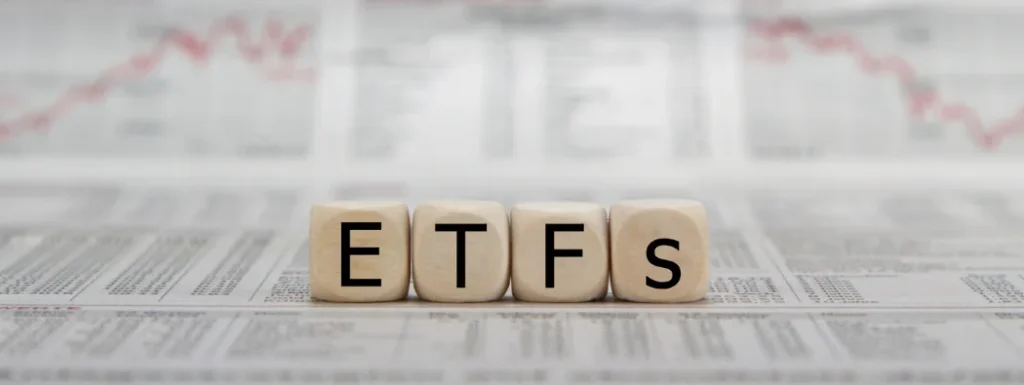Over the past three decades, the market for Exchange-Traded Funds (ETFs) has grown exponentially – and continues to do so. Today, it is a multi-trillion-dollar industry with tens of thousands of funds that track all manner of CFDs on indices [1].
In this article, we will delve into what ETFs are, how they work, and what are the advantages of trading them, especially compared to other equities like mutual funds and stocks.
What Are Exchange-Traded Funds (ETFs)?
As their name suggests, Exchange-Traded Funds (ETFs) are funds listed and traded on a stock exchange. Investors purchase units of an ETF, which are pooled together by a fund manager who then invests in order to replicate the returns of an underlying index.
An index is a basket of stocks that are selected and weighted based on a defined methodology. Indices are a useful indicator of the performance of the broad economy, particular sectors, or certain geographic areas.
Popular indices that are tracked by ETFs include among others the S&P500, FTSE 100, NASDAQ 100, and the Dow Jones Industrial Average.
Advantages of Trading ETFs

There are many reasons why ETFs are growing in popularity among investors.
Firstly, like Mutual Funds, ETFs give investors a convenient way to instantly diversify across hundreds or even thousands of stocks, just by purchasing one ETF unit.
Secondly, ETFs typically have lower expense ratios compared to Mutual Funds, since ETFs are passive by design. Thus, fund managers are not attempting to actively invest to beat the benchmark, and rack up hefty transaction fees in the process.
Thirdly, because they are listed and traded on the stock market, ETFs can be bought and sold just like any other security. This means that there is improved liquidity and price transparency for ETFs, compared to Mutual Funds and other non-listed investments.
Finally, because ETFs are managed, you do not need to deal with corporate actions like Rights Issues, handle dividend payouts from multiple companies, and handle tax matters across jurisdictions you are not familiar with.
How to Trade ETFs
There are many ways investors and traders can gain exposure to ETFs.
The most straightforward way to do so is to buy units of ETFs using your brokerage account, just like how you would invest in stocks, bonds and any other listed assets.
These days, there are many robo-advisor platforms that also invest into ETFs. You can gain exposure to the underlying ETFs by putting money into robo-advisors. One drawback to this approach though is that you will be incurring additional fees from your robo-advisor, on top of any fees charged by the ETF.
Another way you can gain exposure to the price movements of an ETF is by using a Contracts-For-Difference (CFD). A leading CFD provider like Vantage gives you access to top global indices with transparent prices and razor-thin spreads.
In addition to enjoying the inherent advantages of ETFs, trading through CFDs may allow you to use leverage if you so choose, which means you can amplify the exposure you receive from price movements of the underlying ETF.
Leveraged ETFs, however, come with considerable risk and are not appropriate for long-term investing because its amplified exposure can trigger steep losses in a short period of time. Investing in conventional ETFs and leveraged ETFs require very different investment strategies because the latter is designed to achieve only short-term investment objectives while ETFs usually perform much better over a long period of term. You are advised to seek professional advice and understand the risks associated with leveraged ETFs before making a commitment to trade ETF through CFD.
ETFs Are a Powerful Asset for Both Investors and Traders
The many benefits of ETFs make them an integral part of many investors and traders’ portfolios. It is not uncommon to see ETFs being traded actively on the market, and the ever-growing net asset value of leading ETFs bears witness to their popularity.
Active trading volumes make ETFs attractive subjects of technical analysis, providing traders with ample opportunities for executing their trading strategies.
Reference
- “The trillion-dollar ETF boom triggered by the financial crisis just keeps getting bigger – CNBC”. https://www.cnbc.com/2018/09/14/the-trillion-dollar-etf-boom-triggered-by-the-financial-crisis.html . Accessed 26 August 2022.



